Abstract
Measurements of water intake were made on a population of trained conscious dogs of both sexes prepared with chronic third ventricle cannulae. 2. Injection of 100 ng angiotensin II into the third ventricle lead to a prompt stimulation of drinking, the mean water intake over a 5 min period being 503 +/- 89 ml. (n=6) compared with controls. This dipsogenic effect of angiotensin II was abolished by prior central administration of 10 mug saralasin acetate or 100 ng atropine. 3. Injection of 1 mug carbachol into the third ventricle produced a small, variable increase in drinking. 4. Injection of 0-2 ml. 5% NaCl into the third ventricle stimulated drinking, a response that was not affected by prior administration of 10 mug saralasin acetate or 100 ng atropine. 5. Following a 24 hr period of water deprivation there was an increase in plasma osmolality and plasma-renin activity. The drinking following this period of water deprivation was not affected by prior control administration of either 10 mug saralasin acetate or 100 ng atropine. 6. In two acute dogs, intracarotid infusion of 125I angiotensin II was not followed by significant appearance of radioactivity in the third ventricle or cisterna magna c.s.f. 7. The relevance of these results to the control of water intake is discussed.
Full text
PDF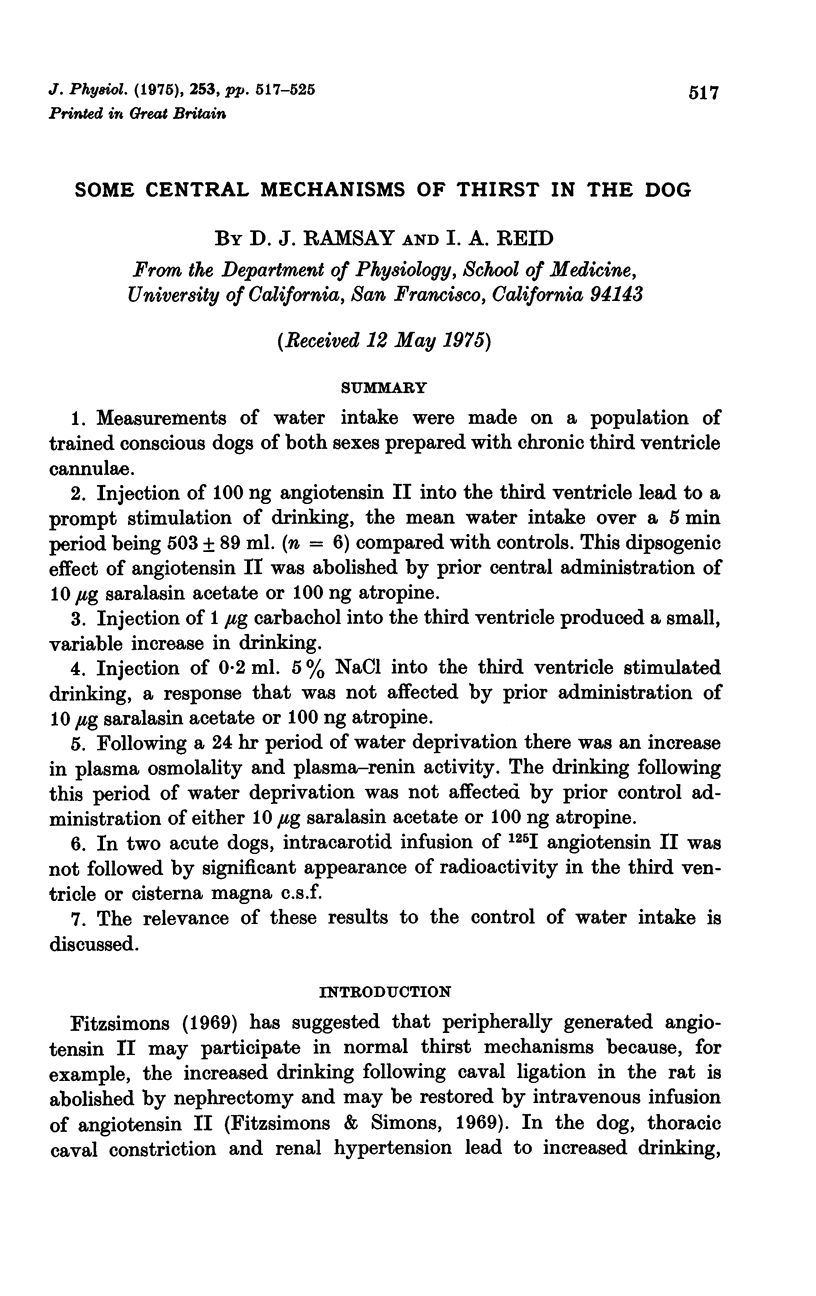
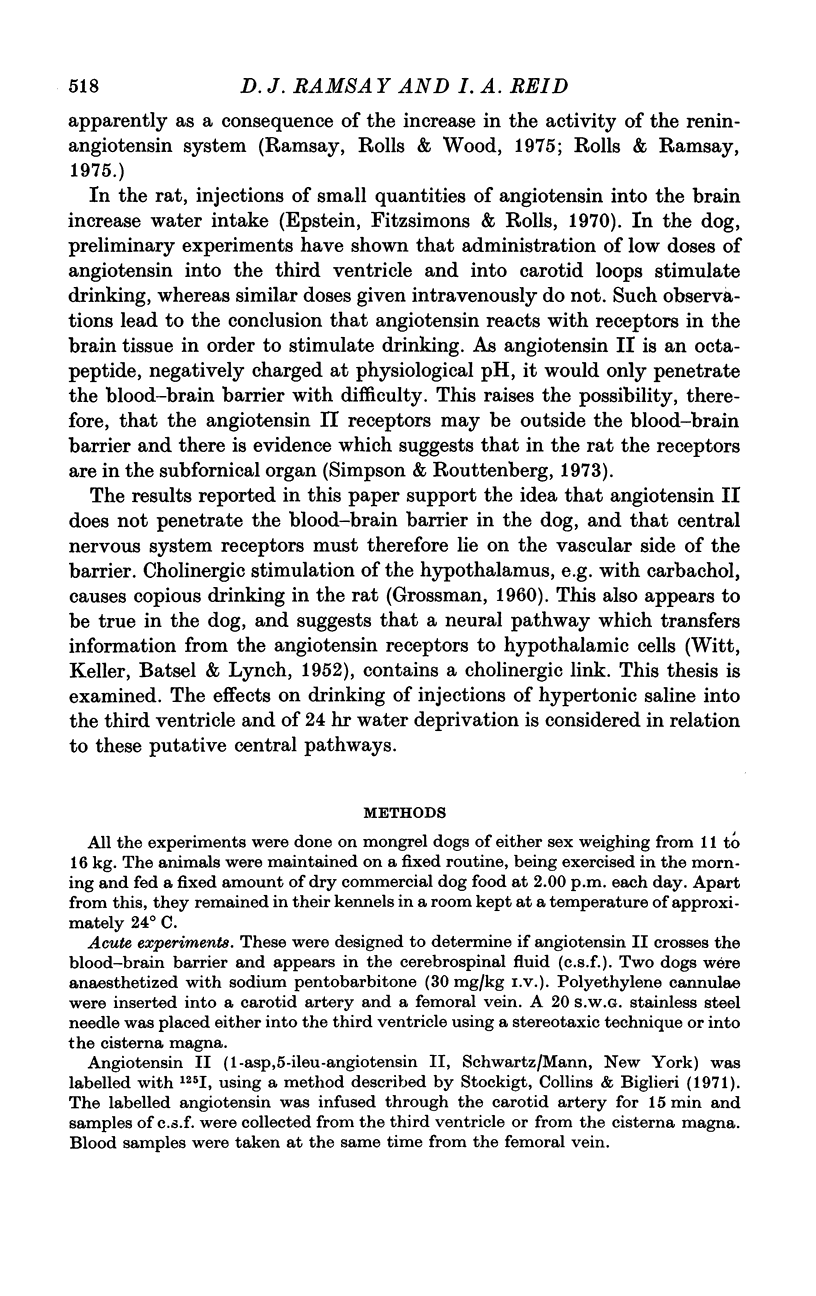
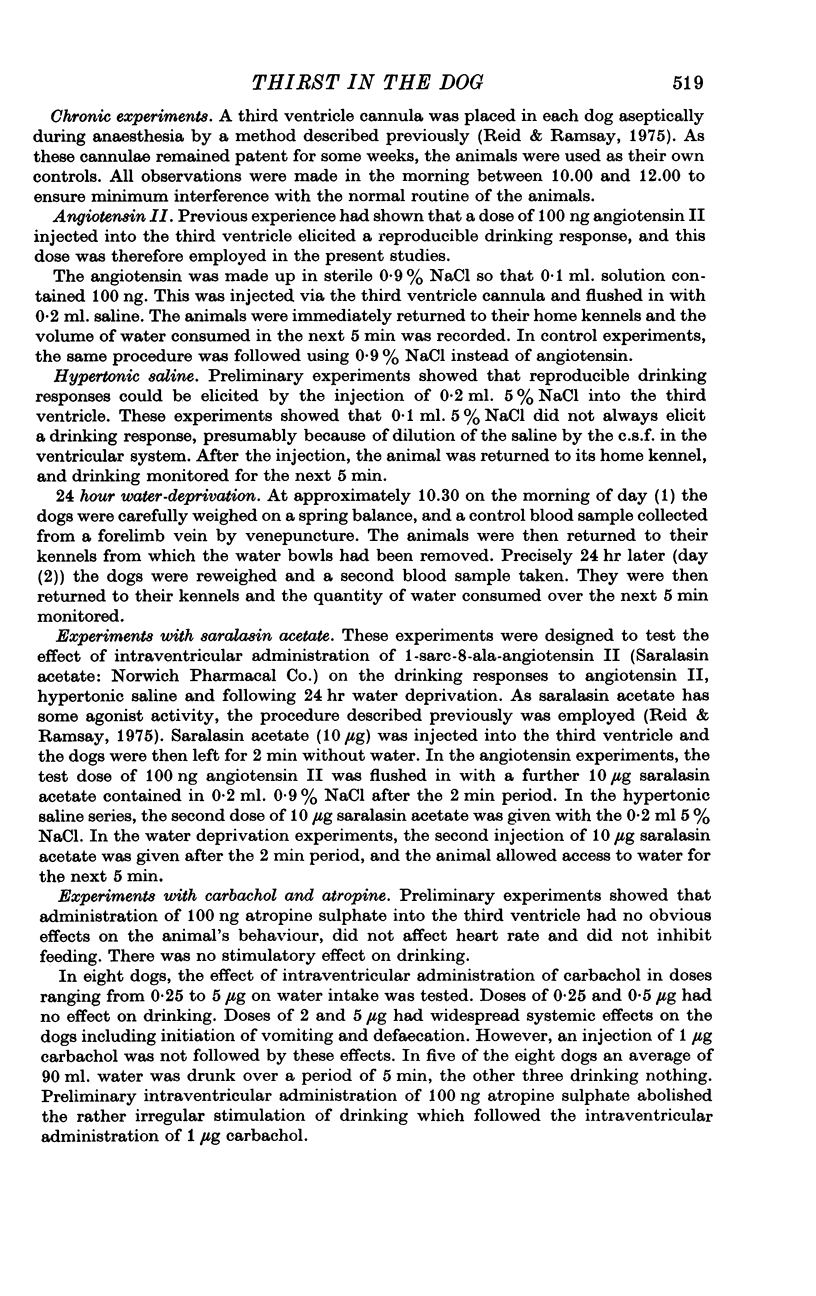
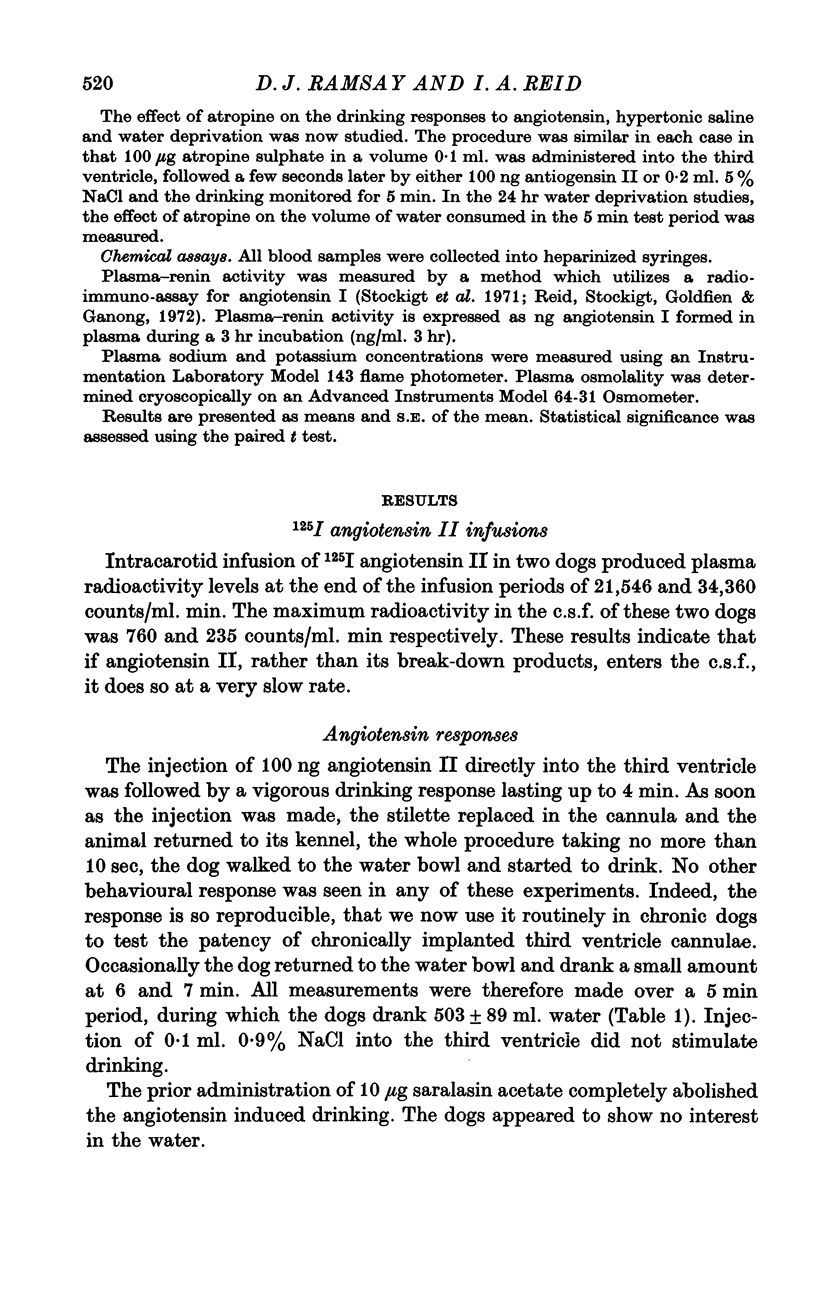
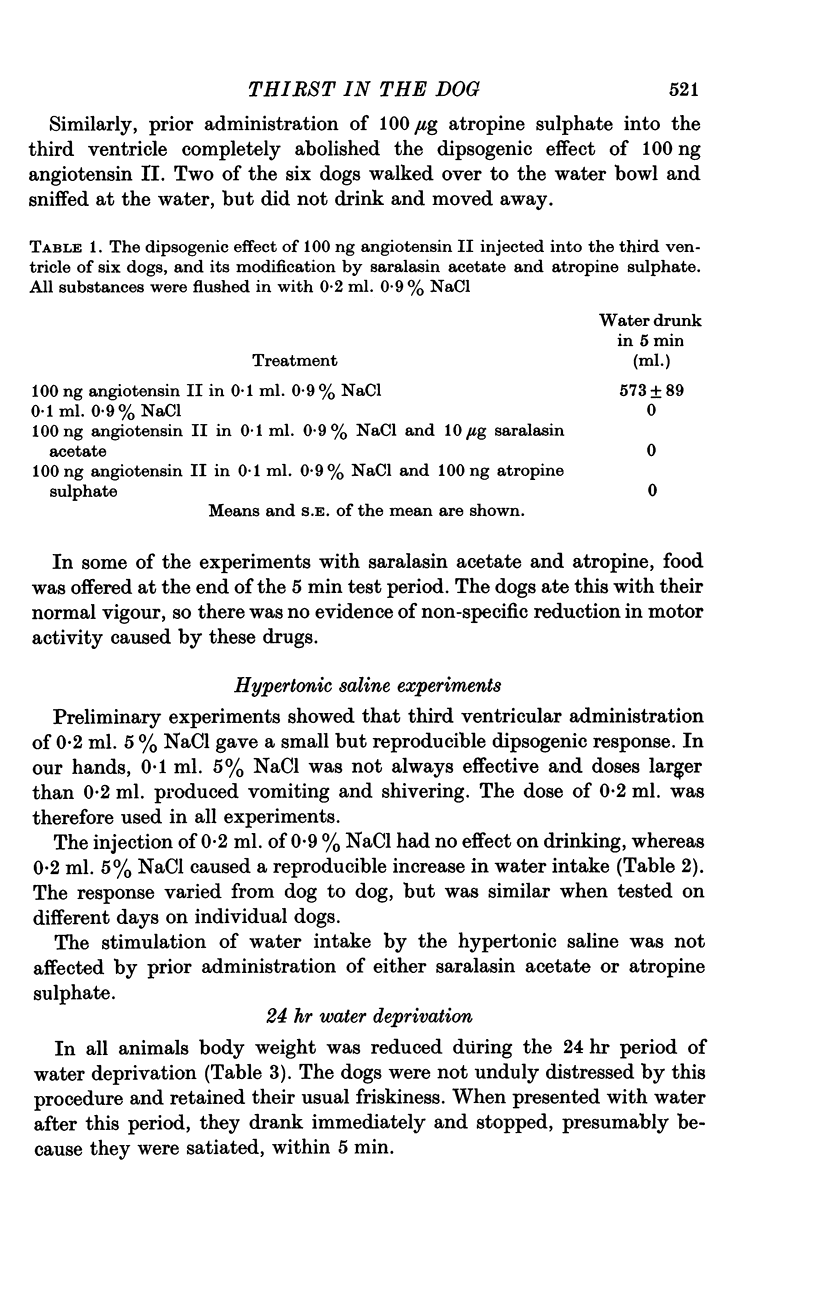
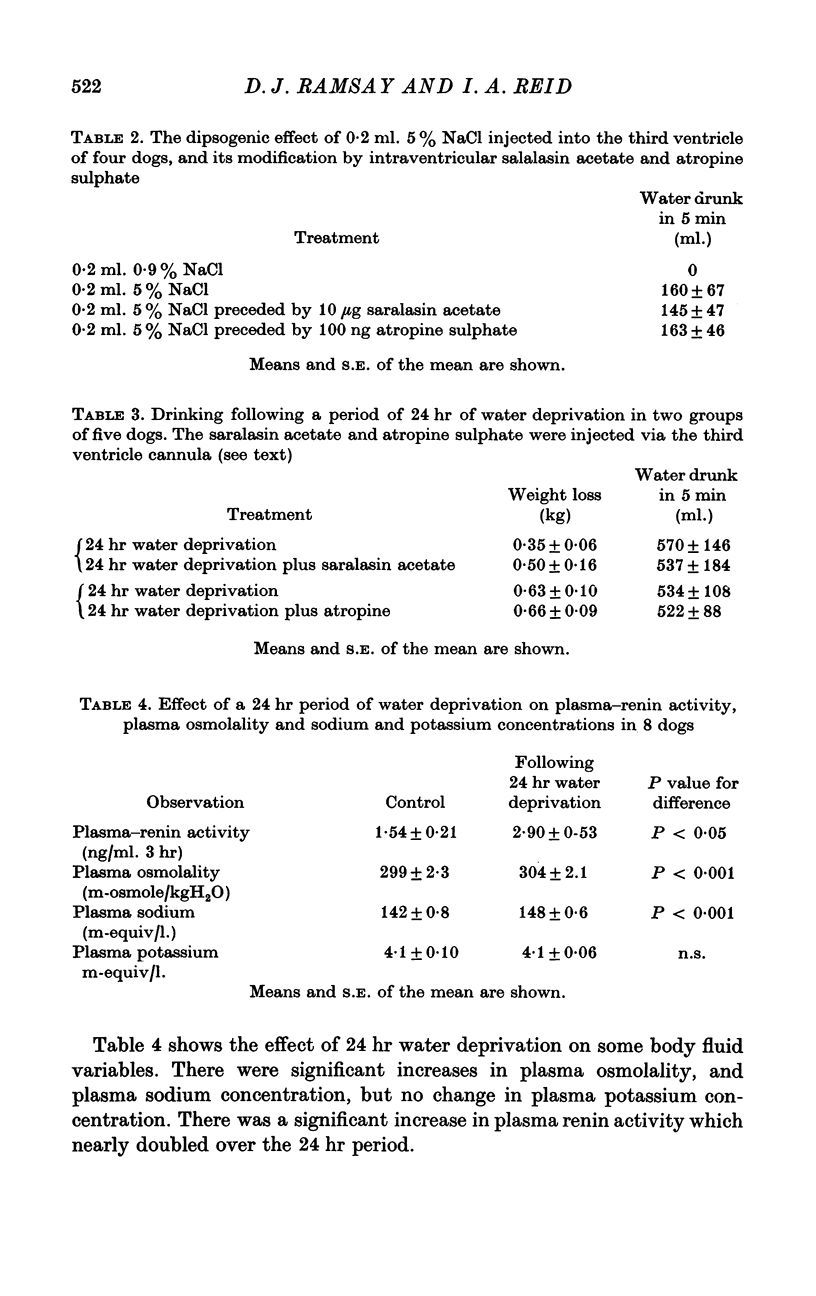
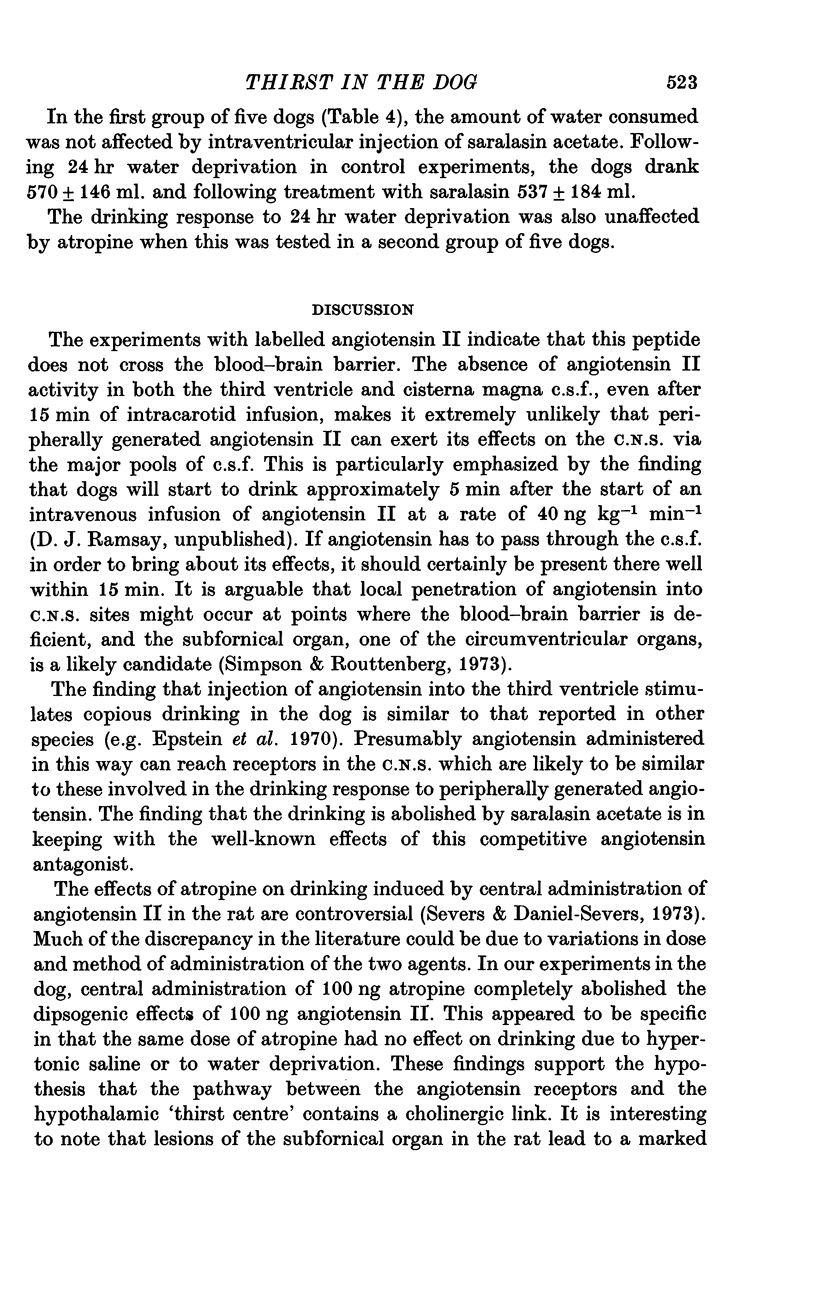
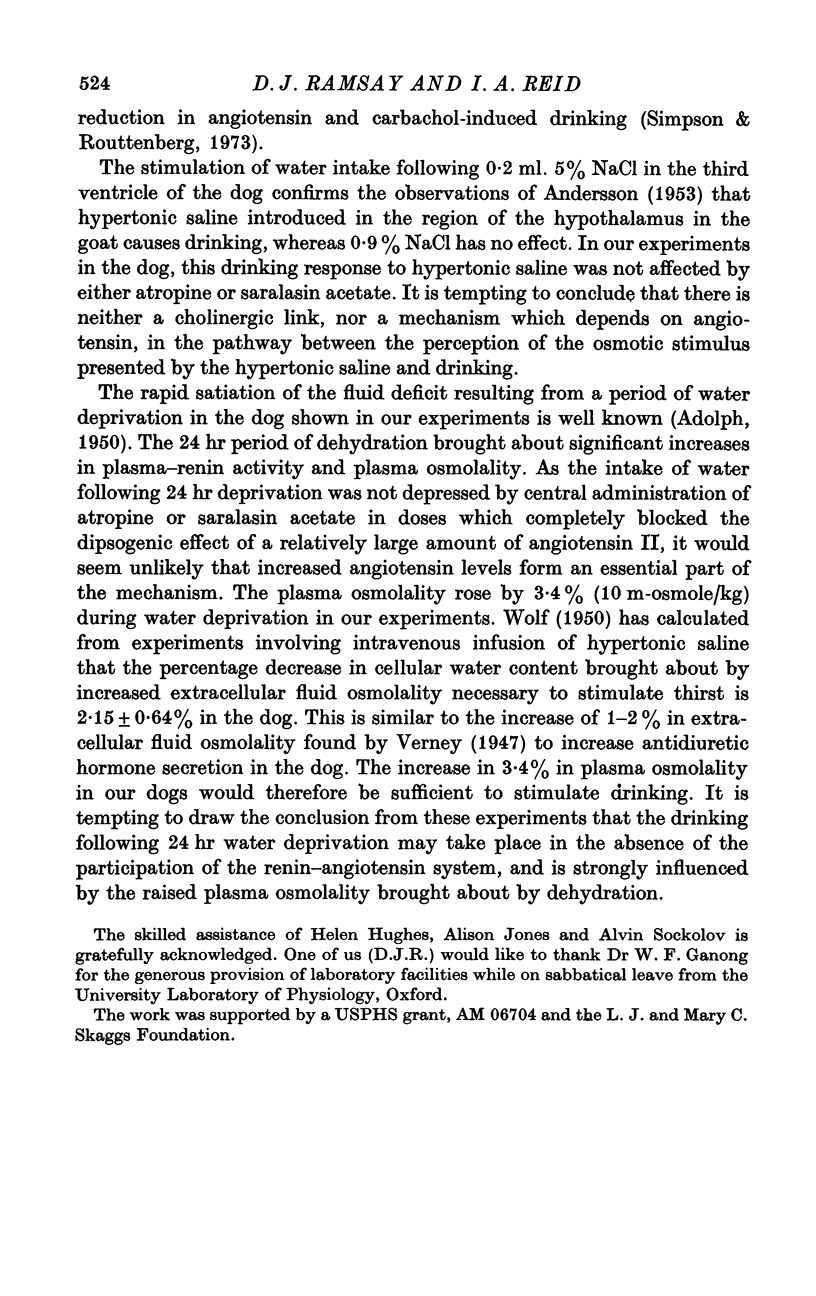
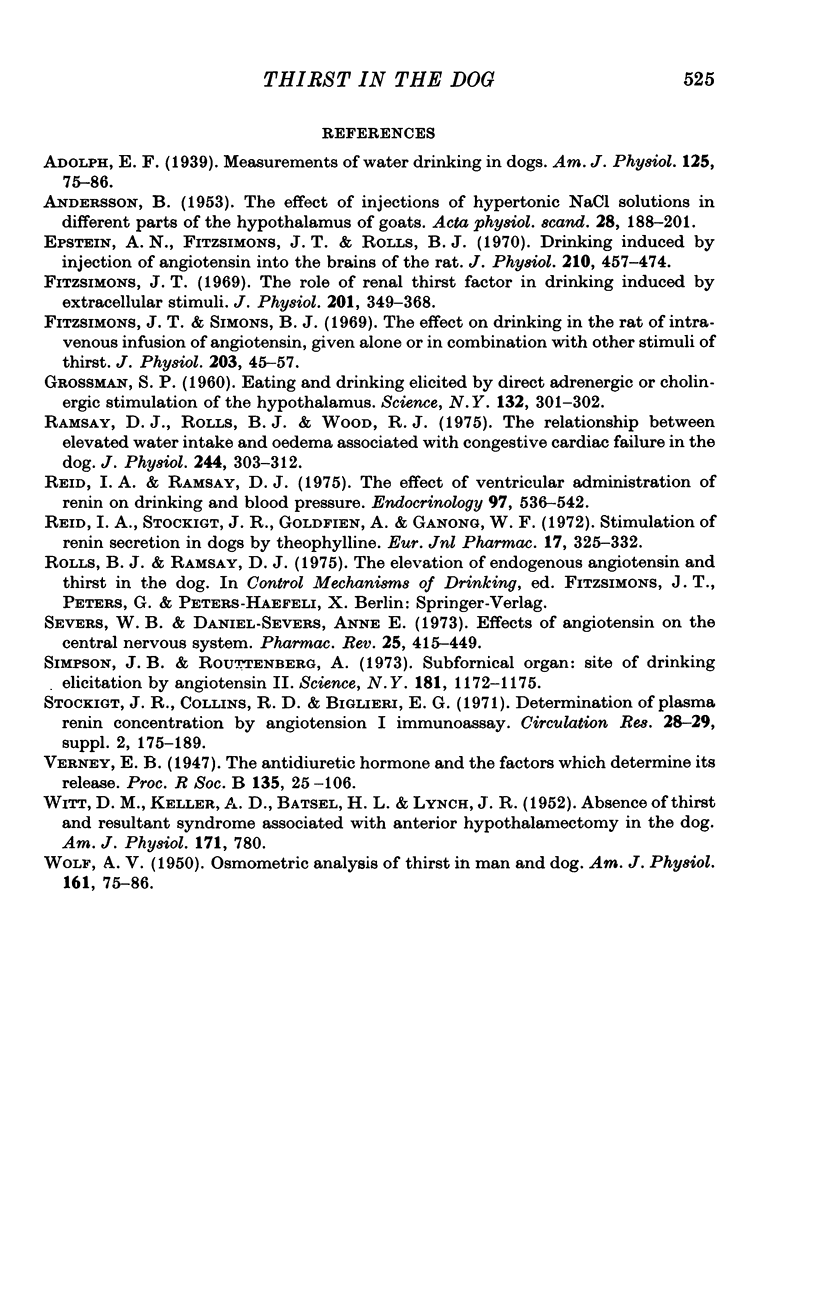
Selected References
These references are in PubMed. This may not be the complete list of references from this article.
- ANDERSSON B. The effect of injections of hypertonic NaCl-solutions into different parts of the hypothalamus of goats. Acta Physiol Scand. 1953;28(2-3):188–201. doi: 10.1111/j.1748-1716.1953.tb00969.x. [DOI] [PubMed] [Google Scholar]
- Epstein A. N., Fitzsimons J. T., Rolls B. J. Drinking induced by injection of angiotensin into the rain of the rat. J Physiol. 1970 Sep;210(2):457–474. doi: 10.1113/jphysiol.1970.sp009220. [DOI] [PMC free article] [PubMed] [Google Scholar]
- Fitzsimons J. T., Simons B. J. The effect on drinking in the rat of intravenous infusion of angiotensin, given alone or in combination with other stimuli of thirst. J Physiol. 1969 Jul;203(1):45–57. doi: 10.1113/jphysiol.1969.sp008848. [DOI] [PMC free article] [PubMed] [Google Scholar]
- Fitzsimons J. T. The role of a renal thirst factor in drinking induced by extracellular stimuli. J Physiol. 1969 Apr;201(2):349–368. doi: 10.1113/jphysiol.1969.sp008760. [DOI] [PMC free article] [PubMed] [Google Scholar]
- GROSSMAN S. P. Eating or drinking elicited by direct adrenergic or cholinergic stimulation of hypothalamus. Science. 1960 Jul 29;132(3422):301–302. doi: 10.1126/science.132.3422.301. [DOI] [PubMed] [Google Scholar]
- Ramsay D. J., Rolls B. J., Wood R. J. The relationship between elevated water intake and oedema associated with congestive cardiac failure in the dog. J Physiol. 1975 Jan;244(2):303–312. doi: 10.1113/jphysiol.1975.sp010799. [DOI] [PMC free article] [PubMed] [Google Scholar]
- Reid I. A., Ramsay D. J. The effects of intracerebroventricular administration of renin on drinking and blood pressure. Endocrinology. 1975 Sep;97(3):536–542. doi: 10.1210/endo-97-3-536. [DOI] [PubMed] [Google Scholar]
- Reid I. A., Stockigt J. R., Goldfien A., Ganong W. F. Stimulation of renin secretion in dogs by theophylline. Eur J Pharmacol. 1972 Mar;17(3):325–332. doi: 10.1016/0014-2999(72)90112-4. [DOI] [PubMed] [Google Scholar]
- Severs W. B., Daniels-Severs A. E. Effects of angiotensin on the central nervous system. Pharmacol Rev. 1973 Sep;25(3):415–449. [PubMed] [Google Scholar]
- Simpson J. B., Routtenberg A. Subfornical organ: site of drinking elicitation by angiotensin II. Science. 1973 Sep 21;181(4105):1172–1175. doi: 10.1126/science.181.4105.1172. [DOI] [PubMed] [Google Scholar]
- WOLF A. V. Osmometric analysis of thirst in man and dog. Am J Physiol. 1950 Apr 1;161(1):75–86. doi: 10.1152/ajplegacy.1950.161.1.75. [DOI] [PubMed] [Google Scholar]


